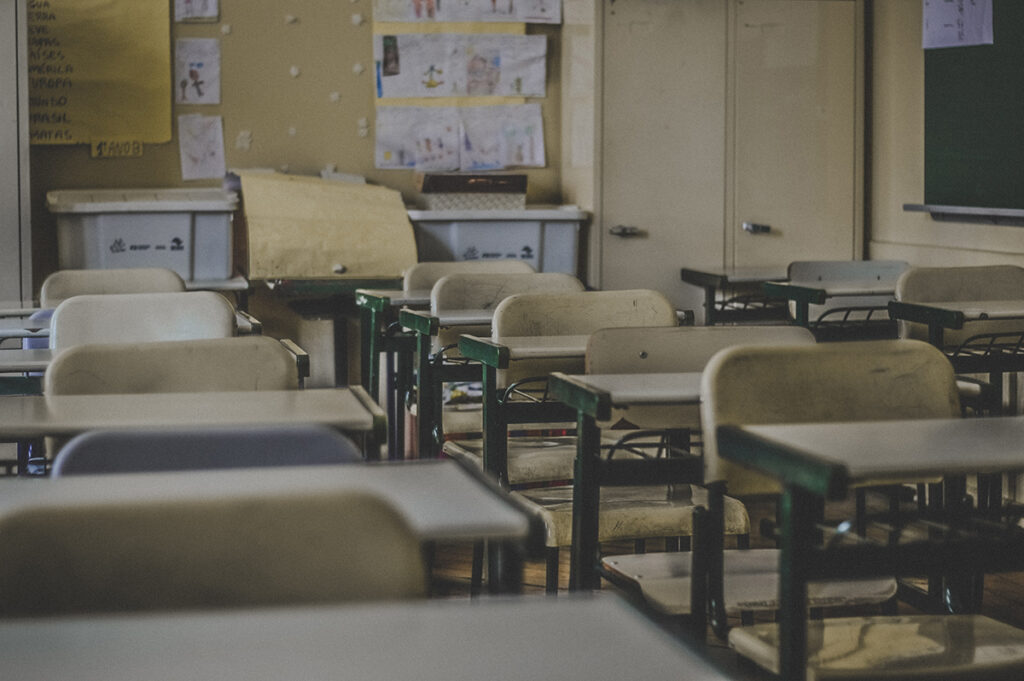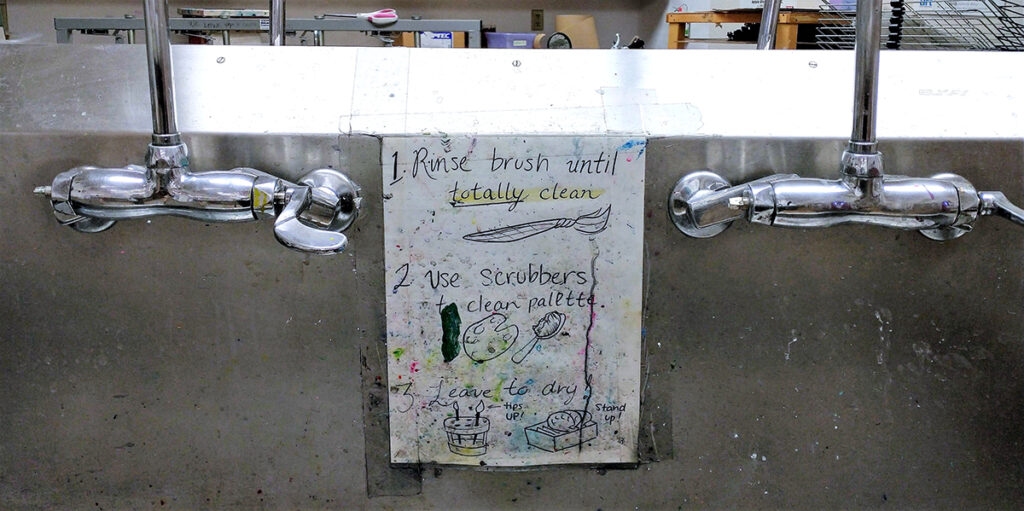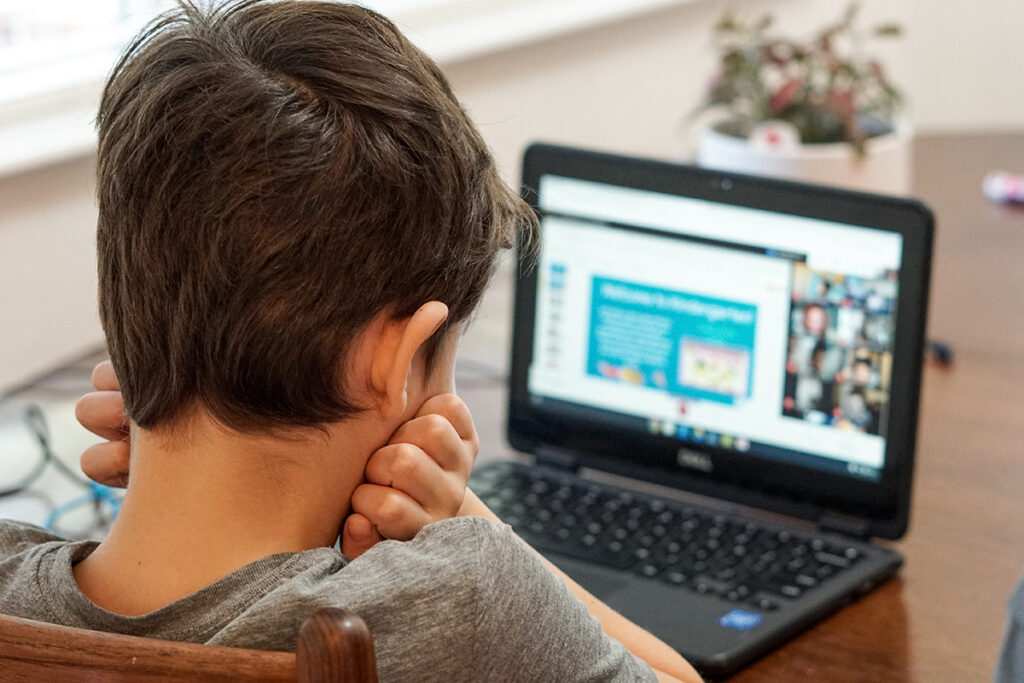You were probably excited to be back in school this year, hoping for a “regular” or “normal” routine again. But, for many of us, going back to school in person resulted in COVID exposures and sudden quarantines for both students and staff.
This situation raises a lot of questions: How do we navigate last-minute absences in the art room? What do we do with long units and in-depth artworks with lots of supplies? How do we wrap up our classrooms at a moment’s notice for a substitute teacher? How do we continue teaching our students when they have to stay at home for an unknown period of time?
As we continue to teach through an unprecedented pandemic, it is safe to assume that we will face an unexpected absence at some point in the year. Whether a student is quarantined due to a COVID exposure or you need to help a family member who is ill, it is impossible to prepare for every single outcome. However, there are many things we can still arrange for to make our year easier in the long run.
Read on for tips and tricks to prepare you and your students for unexpected absences in the art room.

Here are 5 steps to prepare for your unexpected absence:
1. Frontload your routines and norms.
Make sure your routines and norms are in place early, so students continue to follow them even when you are not there. This will save you from having to reteach all your routines when you return. It also will alleviate some stress your substitute teacher may feel walking into an art room. Establishing your routines can even prevent you from having to clean up after your students when you return. At the start of each unit, take the time to write up a formal lesson plan and make it available to your students. It will provide a roadmap for you, your students, and your substitute teacher. For more insight on frontloading before a leave, check out this article.

2. Gather everything you need at the start of a unit.
Organize your supplies and materials as clearly as possible with labels, photos, and instructions. This will make it easier to guide your students and substitute teacher through distributing, taking care of, and collecting supplies. By getting everything together at the start, you will know where everything is in the room—no more scrambling to gather enough colored pencils for each table as you run out the door! And if you don’t need to take off? Your supplies are ready to go for the rest of the unit, making your day-to-day prep that much more streamlined.

3. Use your resources.
Coming up with sub plans can be stressful, but you have a lot of resources available to you. You do not need to build every learning opportunity from scratch. Discuss your semester plans with your school or district art department. Ask for feedback and advice on sub plans if they have taught something similar. You may also have an art lead teacher or art supervisor in your district. This person can give recommendations or point you in the direction of your district’s lessons for substitutes. There are also plenty of online resources, like AOEU, that provide pre-written lesson plans. You may choose to keep them as-is or alter the lesson plans to fit what your students are learning.
4. Troubleshoot ahead of time.
During your next prep period, make sure you have access to your old materials and resources. As instruction has become more digital, it’s important to make sure you can open old file types. On your next teacher workday, take an hour or two to upload and organize your materials in your district’s chosen cloud storage system. This way, you can access them from your home computer and email or share them with your substitute and students if necessary.
5. Focus on yourself.
If the worst does happen and you are out for a while unexpectedly, focus on yourself. I faced an unexpected leave earlier this school year. Thanks to frontloading my expectations and receiving help from our district’s incredible art lead teacher, I was able to focus on my healing. I knew my students were still learning, and it made it easy for me to return. But if students miss a day or two of instruction, it’s not the end of the world. They need you to be healthy to provide them with quality art education. Prioritizing yourself will help you to heal sooner and get back to making art with your students.

Here are 3 steps to prepare for students’ unexpected absences:
1. Determine why your students are completing each lesson.
For each lesson and unit, determine the essential skills students absolutely need. Are they learning how to use a specific medium? Is that medium readily available at home? If not, what is something similar students will likely have access to? Are they building a specific skill? How can students use materials they have to show proficiency in that skill? By answering these questions at the start of each lesson and including them in your final lesson write-up, you will be better prepared to alter your plans and accommodate a student’s absence.
2. Maintain a routine for accessing lessons online.
After the last school year, teachers have become familiar with facilitating online learning. Continue that practice by setting up a space online where students can access lessons and resources remotely. This might mean uploading materials to your LMS or your program’s website. It could even be part of a weekly email home to students and their caregivers. Establish this routine while students are healthy and in school. They will already be familiar with the routine should they be absent for any reason later on.

3. Be ready to supplement your instruction with videos.
Art classes are very hands-on, making student absences difficult. Luckily, the internet is here to help. If you are already filming your demos and lessons, upload your videos to Google Drive and share that link with your absent student. If not, there are many other resources and demos on YouTube you could send to your students. Be sure to preview any resources completely before sharing them. You may even want to create a WebQuest for each of your lessons to make up for missing in-class demos. If you’re interested in filming your lessons or even moving toward a flipped classroom, check out these PRO packs on flipping your classroom and planning instructional videos.

Unexpected absences are a part of every school year. However, they are more prevalent now than ever in our teaching careers. Take time at the start of each unit to prepare for a possible absence. Frontloading information and routines, gathering resources, and distilling each lesson down the essential skills will allow you to modify as needed to accommodate these absences quickly. A little extra time given to the beginning of your lessons will save you stress down the road. After a year and a half of continuing to face the unexpected, any bit of preparation helps.
What routines do you have in place for students to access lessons they may have missed?
How will you share the essential skills for each lesson regardless of who is present in the classroom?
Magazine articles and podcasts are opinions of professional education contributors and do not necessarily represent the position of the Art of Education University (AOEU) or its academic offerings. Contributors use terms in the way they are most often talked about in the scope of their educational experiences.





